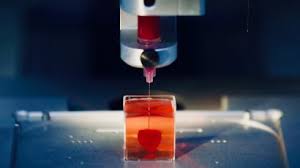
Breaking News
 Battleborn Batteries Responds! Their Overheating Device is a "Feature" not a "Problem
Battleborn Batteries Responds! Their Overheating Device is a "Feature" not a "Problem
 Actor Liam Neeson Outs Himself as MAHA After Narrating Pro-RFK Jr. Documentary Slamming...
Actor Liam Neeson Outs Himself as MAHA After Narrating Pro-RFK Jr. Documentary Slamming...
 Kyle Rittenhouse announced on social media Wednesday that he has tied the knot.
Kyle Rittenhouse announced on social media Wednesday that he has tied the knot.
 JUST IN: President Trump Grants Tina Peters Pardon
JUST IN: President Trump Grants Tina Peters Pardon
Top Tech News
 Build a Greenhouse HEATER that Lasts 10-15 DAYS!
Build a Greenhouse HEATER that Lasts 10-15 DAYS!
 Look at the genius idea he came up with using this tank that nobody wanted
Look at the genius idea he came up with using this tank that nobody wanted
 Latest Comet 3I Atlas Anomolies Like the Impossible 600,000 Mile Long Sunward Tail
Latest Comet 3I Atlas Anomolies Like the Impossible 600,000 Mile Long Sunward Tail
 Tesla Just Opened Its Biggest Supercharger Station Ever--And It's Powered By Solar And Batteries
Tesla Just Opened Its Biggest Supercharger Station Ever--And It's Powered By Solar And Batteries
 Your body already knows how to regrow limbs. We just haven't figured out how to turn it on yet.
Your body already knows how to regrow limbs. We just haven't figured out how to turn it on yet.
 We've wiretapped the gut-brain hotline to decode signals driving disease
We've wiretapped the gut-brain hotline to decode signals driving disease
 3D-printable concrete alternative hardens in three days, not four weeks
3D-printable concrete alternative hardens in three days, not four weeks
 Could satellite-beaming planes and airships make SpaceX's Starlink obsolete?
Could satellite-beaming planes and airships make SpaceX's Starlink obsolete?
Blood vessels incorporated into 3D-printed living skin

First of all, there already are commercially-available 3D-bioprinted skin grafts, made from living cells. These are typically intended just to be temporary wound coverings, however, as they lack the vasculature that would allow life-giving blood to flow from the patient's body and into them. As a result, such grafts eventually die, sloughing off the patient's own skin.
Looking to overcome this limitation, a team at New York's Rensselaer Polytechnic Institute initially started by mixing two types of living human cells to produce so-called "bio-inks." These were printed into a skin-like structure, although it still lacked a vascular system.
More recently, in collaboration with colleagues at Yale University, they added certain "key elements" to those bio-inks. These elements included human endothelial cells – which line the inside of blood vessels – and human pericyte cells, which wrap around the endothelial cells. These were combined with ingredients that are typically found in bioprinted skin grafts, such as animal collagen and other structural cells.
Within the space of a few weeks, blood vessels began growing in skin that had been printed from the new bio-inks. When these pieces of the skin were grafted over open wounds on mice, the animals' blood vessels began communicating with those in the bioprinted skin, causing the grafts to become perfused with blood after four weeks.

 First totally synthetic human brain model has been realized
First totally synthetic human brain model has been realized Mach-23 potato gun to shoot satellites into space
Mach-23 potato gun to shoot satellites into space

